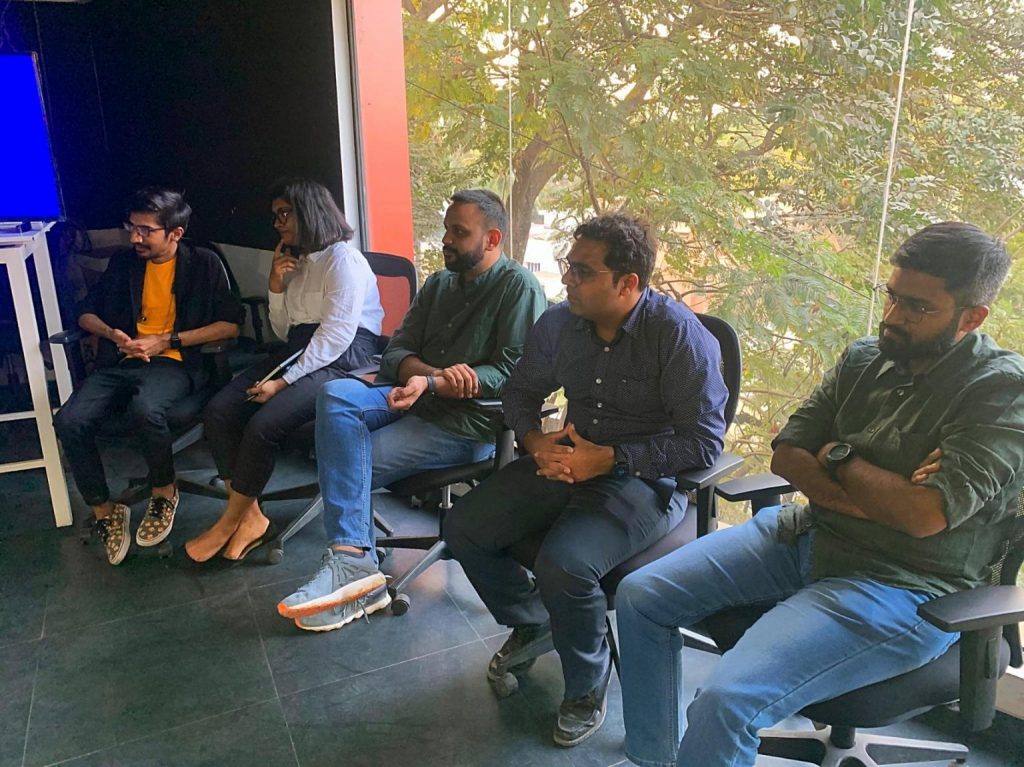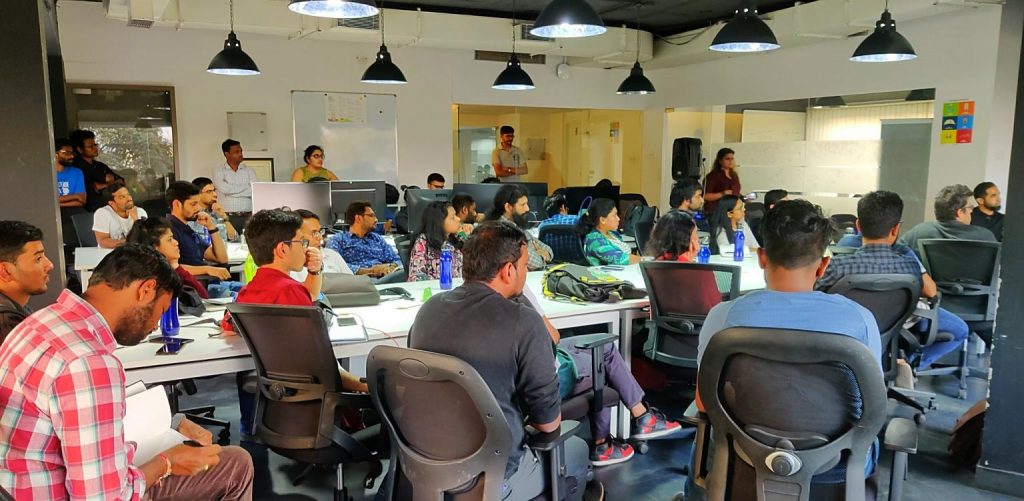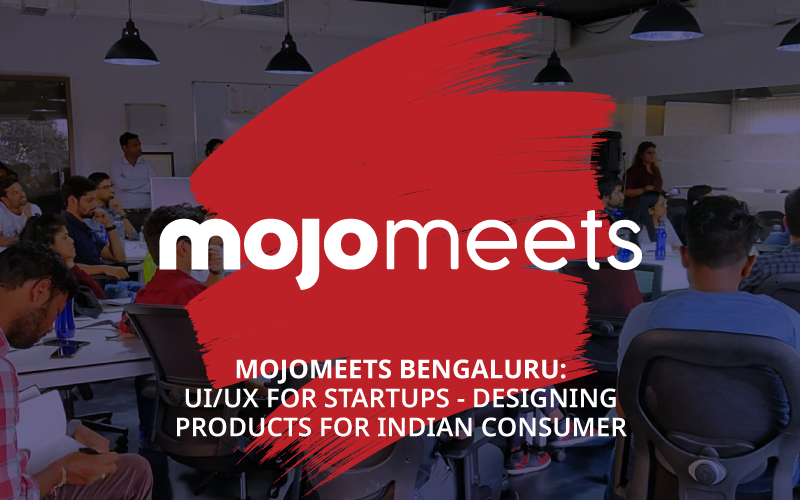How do you design for Indian consumers? UI/UX for Startups in India is not the same as the rest of the world – and we know this now, thanks to mojoMeets Bangalore.
The 6th edition of mojoMeets took place in Bangalore – and right here at basecamp! This time, we gathered the city’s most enterprising UI/UX and product designers
UI/UX for Startups – Speakers and Panelists:
Sidharth – Product and Design Lead, Headout
Tanushree Bose – Principal Product UX Designer, 1st Main
Vishal Gupta – Director of Design, Instamojo
Jatin Bhagat – Principal Product Manager, Acko
Ajith Sowndrarajan – Associate Director of Product Design and UX Research, Flipkart
Designing the Payment Gateway Ecosystem – Sampad Swain
Sampad Swain, Co-founder at Instamojo, opened the session with a small intro to the design journey of Instamojo, as a brand and payment gateway. Sampad spoke about how Instamojo’s vision was for every merchant on the internet to trust Instamojo as a payment gateway – and that had to be seen in the design.
And colour had a role to play in building a trust factor for users. 75% of Instamojo’s team lies in the product and designing the brand for customers. The company does not have people going out to convince people to use us, we design it from here.
“ We were building products for new internet users, not people who simply used it as a consumer, but for business purpose” – Sampad
Convincing customers to use your brand through UI/UX design –
How do you convince your customer to use a new and unknown company, for payments? It’s like giving your wallet to someone you just met.
Instamojo and many other brands face this issue every day. Luckily, designers like Sidharth have a solution.
Instamojo’s designers did not just build software, we built transactions for them too. From the perspective of designers, Instamojo’s businesses include – Payment business, e-commerce business and lending business. E-commerce and lending are pretty new.
Hit the jackpot with payment links – people will not care much about your brand as is, but what it offers. People share links in bulk. Instamojo is a DIY product – and it works.
“ Affordability is much less important than access to the end-user.” – Sampad
You should not have to tell people what your design is about – just show them. – Sampad
Mohamed Ansari, moderator of the event kickstarted mojoMeets with a short introduction of the speakers. Post this, the panel began answering important questions about design.

Designing products for Indian consumers – what UI/UX means in India
Tanushree Bose kicked off the discussion by stating how all need to understand what design is for – solving a problem for the user.
According to Tanushree, end-users represent the ecosystem they belong to. If you need to design a product, match this approach with your business needs.
“Indian consumers are habituated to using products the way they find it simplest. That’s why it so important to make a product intuitive.” – Tanushree Bose
Similarly, the world is changing its attitude to designing for women; an often neglected audience. Tanushree states how over 57% of Indian women are now calling the shots; the decision-makers in their family. When it comes to designing for the Indian consumer, leave no one behind!
” Design is much beyond UI and UX. There are multiple ways to solve any problem, it’s not a two-way solution.” – Sidharth
Design is about effective communication – Ajith
Ajith Sowndrarajan and Jatin took to discussing the storytelling aspect of design. Designers need to get the attention of the customer, using artifacts at their disposal.
“Design is about effective communication. Sometimes it’s invisible, but it gets the job done. It creates value, and it’s got to be honest. Good design brings in good business especially for B2B” – Ajith Sowndararajan
According to the speakers, sometimes, the design is not an interface, it is an industry. It can get money into your account. Think of it as a business at the end of the day. Ajith stressed the 3 most important segments of design for the Indian consumer – Communication, value addition, and honesty.
Ajith, who carries experience with the B2B sector understands how it is a difficult thing to sell something pretty to a B2B client. You need to make it something that can give you business, that’s when you know it is good design.

Jatin also stressed how India is mobile-focused now, more than ever, even in comparison to China and the USA. UI/UX for startups in India should focus on mobile-friendly design.
“Indian consumers are different because they’ve adopted the internet so quickly and in such masses that it makes them very mobile-focused.” – Jatin Bhagat
Community is a key ingredient for UI/UX design – Vishal Gupta
The speakers began to delve deep into the mindset of the Indian consumer when it came to product design. Sidharth, the lead designer at Headout, introduced the concept of decolonizing design.
With this, he insisted that India hold back from completely apeing the west with its design guidelines, and completely ignoring it. Instead, find middle ground Let east meet west. There is a mix of cultures in India, and it is a connected and socially driven place, so how can you make everyone happy with your design?
According to Vishal, you add in the community element. Go vernacular in your design. If a person talks about your brand or product through a word of mouth, it is enough for others to trust you.
Design is about building experience. This is why here, people associate themselves with their brands.
“When designing for India, you must be mindful of inclusivity. Make for everyone and by that I mean for all cultures and locations” – Vishal Gupta
UI/UX for Startups India – Panel discussion
The audience, a mix of designers and design enthusiasts, continued the discussion with a few questions. The panelists discussed the challenges of integrating data with design and how designers need to keep themselves updated on the different technologies used to revolutionize design.
A pro tip from the speaker: Research is not equal to designing. Split the process, listen to data, go iterative.
Respect your time as a designer. Observe from the inside, you cannot do anything by being a spectator, according to Sidharth.
Designing for India is like a big wedding. You must participate to design for Indian consumers – research, observe, and execute.” – Sidharth
Good design leads to happy customers. mojoMeets Bangalore taught us a lot about how customers see your brand. This is why we must take that extra step to make sure we cater to building trust too.
So, what’s your business’s design strategy?

